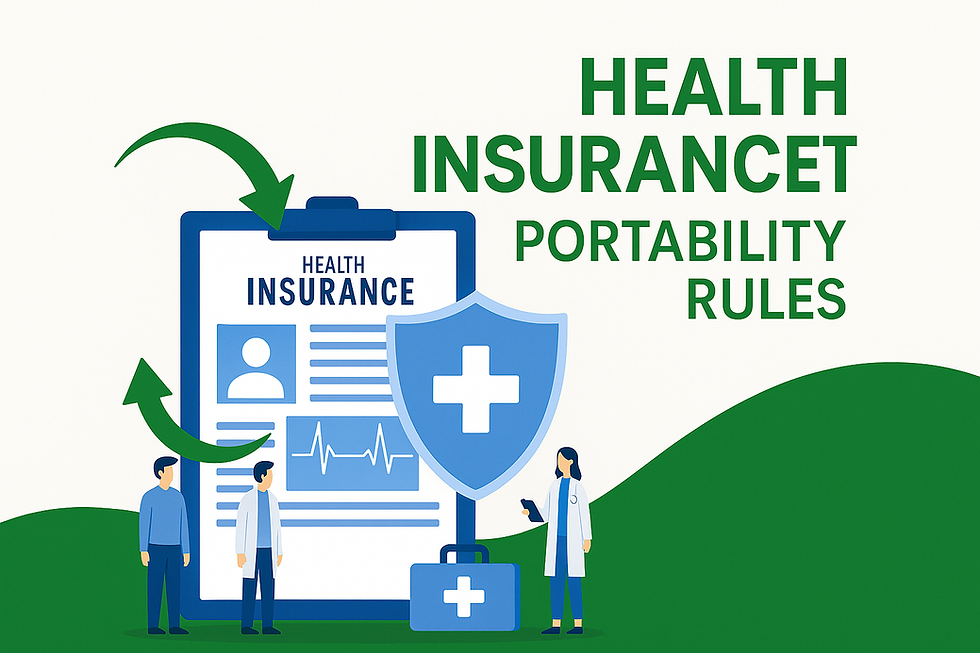Your Health Plan Might Soon Get Cheaper and Better
- Interns @btwimf.com
- Jul 25
- 3 min read

In a world where inflation affects everything from groceries to gas, the idea that your health plan might actually become cheaper and better in the near future may sound too good to be true. However, recent developments in policy, technology, and healthcare delivery suggest this might not just be wishful thinking.
What’s Driving This Change?
There are several key drivers behind the trend of improving affordability and quality in health insurance:
Government policy reforms: Some countries are introducing caps on annual premium hikes, while others are offering subsidies to more income brackets.
Digital health innovation: Telemedicine, AI diagnostics, and remote monitoring tools reduce costs by minimizing unnecessary hospital visits.
Value-based care models: Shifting from fee-for-service to outcome-based models helps insurers offer better care for less.
Increased competition: With more insurers entering the market, there’s a push to offer better benefits at lower premiums.
Average Premium Trends (2022–2025)
Year | Individual Plan (Monthly Avg.) | Family Plan (Monthly Avg.) | Notes |
2022 | $475 | $1,235 | High inflation |
2023 | $460 | $1,210 | Modest drop |
2024 | $440 | $1,180 | Impact of digital adoption |
2025 (Est.) | $420 | $1,130 | Value-based care effects |
(Source: KFF Health Insurance Report)
This gradual reduction in premiums shows how your health plan could be getting both cheaper and more efficient over time.
How Will Your Health Plan Improve?
1. Lower Premiums Through Tech Adoption
With the rise of health apps, virtual consultations, and AI-powered symptom checkers, insurers save significantly on operational and claim costs. These savings often trickle down to policyholders in the form of reduced premiums or added benefits.
2. Personalized Care
Advanced data analytics means your health plan could soon tailor services to your needs. From curated wellness programs to AI-generated diet plans, personalized care is fast becoming the norm.
3. Preventive Focus
New-age insurance plans emphasize early detection and prevention. With incentives like discounted premiums for regular checkups or maintaining fitness metrics, you’re rewarded for staying healthy.
4. More Transparent Pricing
Regulations now demand greater transparency from insurers. This means fewer hidden charges and more clarity on what your policy covers—making your health plan genuinely better.
Key Stats That Show the Shift
Telehealth adoption grew by 600% between 2020 and 2023, significantly reducing per-visit costs (Source: McKinsey Health Tech Report).
Preventive care incentives have lowered hospitalization rates by 15% in plans that offer fitness-based rewards.
In countries with national healthcare reforms, average health insurance premiums have dropped by 7–12% over three years.
Common Features in the New-Age Health Plan
Feature | Old Health Plan | New-Age Health Plan |
Premium Growth Rate | 8–10% annually | 2–4% annually (projected) |
Coverage Transparency | Complex terms | Simplified with digital tools |
Doctor Network Access | Limited | Virtual & global access |
Claim Process | Manual and slow | App-based, real-time approvals |
Preventive Health Rewards | Rare | Widely included |
These improvements ensure that your health plan is not just a backup in emergencies but also an active part of your everyday well-being.
FAQs
Q1: Why is my health plan likely to get cheaper?
Answer: New technologies, regulatory reforms, and a shift toward value-based care have all helped insurers reduce administrative and treatment costs. These savings are increasingly being passed on to consumers.
Q2: Will cheaper health plans mean fewer benefits?
Answer: Not necessarily. Many modern plans are offering more benefits—like virtual care, wellness apps, and preventive services—while lowering premiums due to cost efficiencies.
Q3: Can I switch to a better plan mid-year?
Answer: Depending on your country and provider, you may switch during special enrollment periods or qualifying life events (like marriage, job change, etc.). Always review policy documents carefully.
Q4: How do I know if my current health plan is outdated?
Answer: If your health plan lacks digital services, doesn’t reward wellness, and sees regular 10%+ premium hikes, it may be worth comparing with newer offerings on the market.
A Human Angle: Real-Life Impact
Take for example Priya, a 35-year-old freelancer. She previously paid $500/month for a basic plan with limited OPD coverage. In 2025, she switched to a modern digital health plan costing just $380/month. Now she gets unlimited virtual doctor visits, fitness rewards, and even mental health sessions included. Her total healthcare expenses dropped by nearly 20% in one year—all because her health plan got cheaper and better.
References
KFF Health Insurance Premium Trends
McKinsey & Co – The Future of Health Insurance
Conclusion
As healthcare continues to evolve through policy changes and technological advancements, your health plan is poised to become both more affordable and more effective. Whether it’s through lower premiums, personalized care, or transparent pricing, the improvements are already underway. Take time to compare your existing plan with newer offerings and consult with a trusted advisor if needed. You deserve a health plan that’s not only there when you fall ill—but also one that helps you stay healthy in the first place.
In the coming years, expect that your health plan might soon get cheaper and better.










Comments